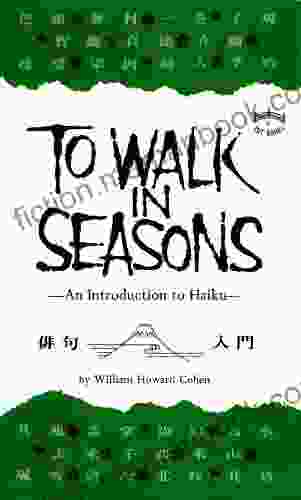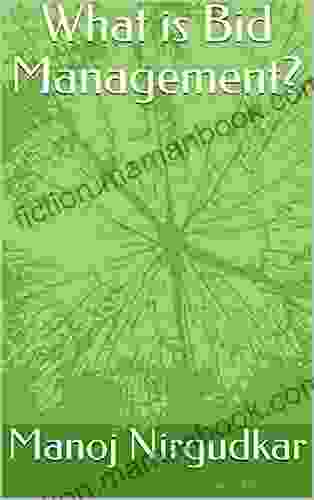To Walk in Seasons: An Introduction to Haiku

Haiku, a traditional form of Japanese poetry, has captivated readers for centuries with its ability to capture the beauty of the natural world in a few simple brushstrokes. Through its unique form and structure, haiku evoke a sense of wonder and appreciation for the changing seasons, offering a glimpse into the interconnectedness of nature and human emotion. 4 out of 5 In this comprehensive guide, we will explore the art of haiku, its rich history, essential elements, and aesthetic qualities. Whether you are a seasoned poet or new to the world of haiku, this journey will provide you with a deeper understanding and appreciation for this timeless art form. The origins of haiku can be traced back to the 17th century in Japan, where it emerged from a longer poetic form known as renga. Over time, poets began to isolate individual stanzas from these renga, creating independent poems that captured a single moment in time. Matsuo Bashō, widely regarded as the master of haiku, revolutionized the form in the late 17th century. He emphasized the importance of using kigo, or seasonal references, to ground the poem in the natural world. Bashō's influence continues to shape the art of haiku to this day. Haiku are characterized by their concise structure and distinct aesthetic principles. These essential elements include: A traditional haiku consists of three lines, with a specific syllable count: This 5-7-5 pattern creates a sense of rhythm and balance. Kigo are seasonal references that evoke a specific time of year. They ground the poem in the natural world and provide a sense of context. For example, cherry blossoms represent spring, while falling leaves symbolize autumn. Kireji are cutting words that create a sense of separation or surprise. They often appear at the end of a line, creating a break or pause that enhances the poem's impact. Common kireji include "ya" (an exclamation),"kana" (a sense of realization),and "keri" (a sense of completion). Beyond their technical elements, haiku possess unique aesthetic qualities that distinguish them from other forms of poetry: The brevity of haiku forces poets to distill their thoughts and observations into a few essential words. This conciseness creates a sense of focus and intensity. Haiku often rely on suggestion rather than explicit statements. They present a moment or image without fully explaining its significance, leaving room for the reader's interpretation. Poets often juxtapose two images or ideas in haiku, creating a sense of tension or surprise. This juxtaposition can reveal unexpected connections and insights. To fully appreciate haiku, it is important to approach them with a sense of openness and curiosity. Allow yourself to be transported to the natural world and to experience the emotions and insights that the poet conveys. Consider the following tips for enhancing your appreciation of haiku: Haiku, with its brevity, suggestion, and juxtaposition, offers a unique and profound way to connect with the natural world and to explore the human experience. By understanding its essential elements and aesthetic qualities, we can deepen our appreciation for this timeless art form and gain a greater awareness of the beauty and wonder that surrounds us. As you embark on your own journey into the world of haiku, remember the words of Bashō: "To walk in seasons, to lie down in summer grasses - that is to live."Language : English File size : 1283 KB Text-to-Speech : Enabled Screen Reader : Supported Enhanced typesetting : Enabled Print length : 100 pages Paperback : 179 pages Item Weight : 1.15 pounds Dimensions : 5.98 x 0.63 x 9.02 inches Hardcover : 277 pages A Brief History of Haiku
Essential Elements of Haiku
1. Form and Structure
2. Kigo
3. Kireji
Aesthetic Qualities of Haiku
1. Brevity
2. Suggestion
3. Juxtaposition
Appreciating Haiku
Further Reading
- The Poetry Foundation: Haiku
- Encyclopædia Britannica: Haiku
- The Haiku Handbook by William J. Higginson
4 out of 5
| Language | : | English |
| File size | : | 1283 KB |
| Text-to-Speech | : | Enabled |
| Screen Reader | : | Supported |
| Enhanced typesetting | : | Enabled |
| Print length | : | 100 pages |
| Paperback | : | 179 pages |
| Item Weight | : | 1.15 pounds |
| Dimensions | : | 5.98 x 0.63 x 9.02 inches |
| Hardcover | : | 277 pages |
Do you want to contribute by writing guest posts on this blog?
Please contact us and send us a resume of previous articles that you have written.
 Top Book
Top Book Novel
Novel Fiction
Fiction Nonfiction
Nonfiction Literature
Literature Paperback
Paperback Hardcover
Hardcover E-book
E-book Audiobook
Audiobook Bestseller
Bestseller Classic
Classic Mystery
Mystery Thriller
Thriller Romance
Romance Fantasy
Fantasy Science Fiction
Science Fiction Biography
Biography Memoir
Memoir Autobiography
Autobiography Poetry
Poetry Drama
Drama Historical Fiction
Historical Fiction Self-help
Self-help Young Adult
Young Adult Childrens Books
Childrens Books Graphic Novel
Graphic Novel Anthology
Anthology Series
Series Encyclopedia
Encyclopedia Reference
Reference Guidebook
Guidebook Textbook
Textbook Workbook
Workbook Journal
Journal Diary
Diary Manuscript
Manuscript Folio
Folio Pulp Fiction
Pulp Fiction Short Stories
Short Stories Fairy Tales
Fairy Tales Fables
Fables Mythology
Mythology Philosophy
Philosophy Religion
Religion Spirituality
Spirituality Essays
Essays Critique
Critique Commentary
Commentary Glossary
Glossary Bibliography
Bibliography Index
Index Table of Contents
Table of Contents Preface
Preface Introduction
Introduction Foreword
Foreword Afterword
Afterword Appendices
Appendices Annotations
Annotations Footnotes
Footnotes Epilogue
Epilogue Prologue
Prologue Henry William Herbert
Henry William Herbert Peter Swan
Peter Swan Jill Bialosky
Jill Bialosky Kathleen Sheeder Bonanno
Kathleen Sheeder Bonanno Ward Larsen
Ward Larsen Thomas Sewell
Thomas Sewell J Eugene Porter
J Eugene Porter Claire Pearcy
Claire Pearcy Ravenna Young
Ravenna Young Charlene Y Atchison
Charlene Y Atchison Gregory Maguire
Gregory Maguire Michael Boulerice
Michael Boulerice Thomas Herold
Thomas Herold Kimberly Denney
Kimberly Denney Madeline K Adams
Madeline K Adams Faith Borkowsky
Faith Borkowsky Honey Phillips
Honey Phillips Joel T Nigg
Joel T Nigg R P Chope
R P Chope Kerry Lonsdale
Kerry Lonsdale
Light bulbAdvertise smarter! Our strategic ad space ensures maximum exposure. Reserve your spot today!

 Vince HayesTo Kill Fae The Dragon Portal: An Enthralling Tale of Courage, Sacrifice, and...
Vince HayesTo Kill Fae The Dragon Portal: An Enthralling Tale of Courage, Sacrifice, and...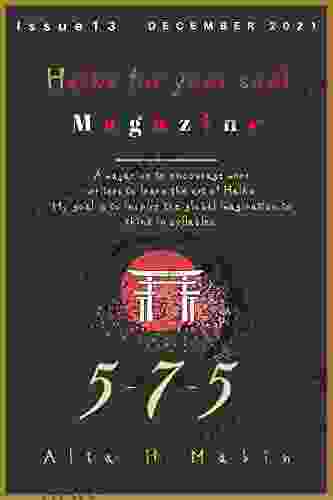
 Curtis StewartHaiku for Your Soul: Issue 13 - A Journey into the Heart of Japanese Poetry
Curtis StewartHaiku for Your Soul: Issue 13 - A Journey into the Heart of Japanese Poetry Dustin RichardsonFollow ·4.4k
Dustin RichardsonFollow ·4.4k Junot DíazFollow ·3.7k
Junot DíazFollow ·3.7k Glen PowellFollow ·7.7k
Glen PowellFollow ·7.7k Vernon BlairFollow ·5.6k
Vernon BlairFollow ·5.6k Enrique BlairFollow ·15.4k
Enrique BlairFollow ·15.4k Hector BlairFollow ·3.8k
Hector BlairFollow ·3.8k Ray BlairFollow ·10.9k
Ray BlairFollow ·10.9k Hamilton BellFollow ·8.3k
Hamilton BellFollow ·8.3k
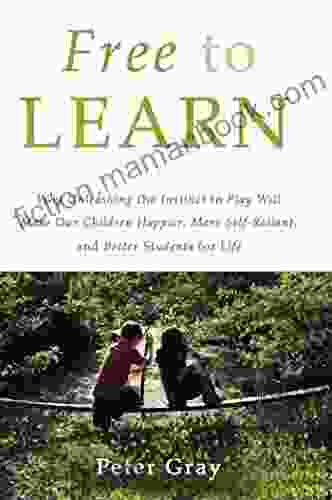
 Abe Mitchell
Abe MitchellWhy Unleashing the Instinct to Play Will Make Our...
Play is an essential part of childhood. It is...

 Rubén Darío
Rubén DaríoTheory in Health Promotion Research and Practice
Theory is essential...

 Howard Blair
Howard BlairFailing Students or Failing Schools: Uncovering the Root...
In the United States, the issue of failing...
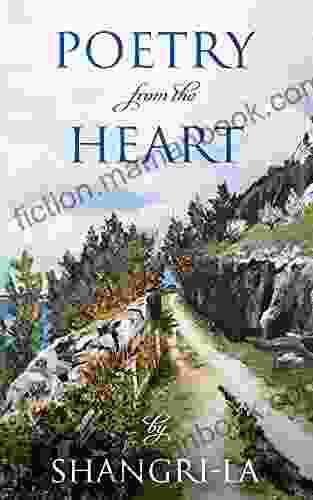
 Ira Cox
Ira CoxPoetry From the Heart Chope: A Symphony of Soul and Verse
Embark on a literary...

 Easton Powell
Easton PowellThe Witch Hunt: Wicked Witches of Shadow Woods
In the cursed woods of...
4 out of 5
| Language | : | English |
| File size | : | 1283 KB |
| Text-to-Speech | : | Enabled |
| Screen Reader | : | Supported |
| Enhanced typesetting | : | Enabled |
| Print length | : | 100 pages |
| Paperback | : | 179 pages |
| Item Weight | : | 1.15 pounds |
| Dimensions | : | 5.98 x 0.63 x 9.02 inches |
| Hardcover | : | 277 pages |


